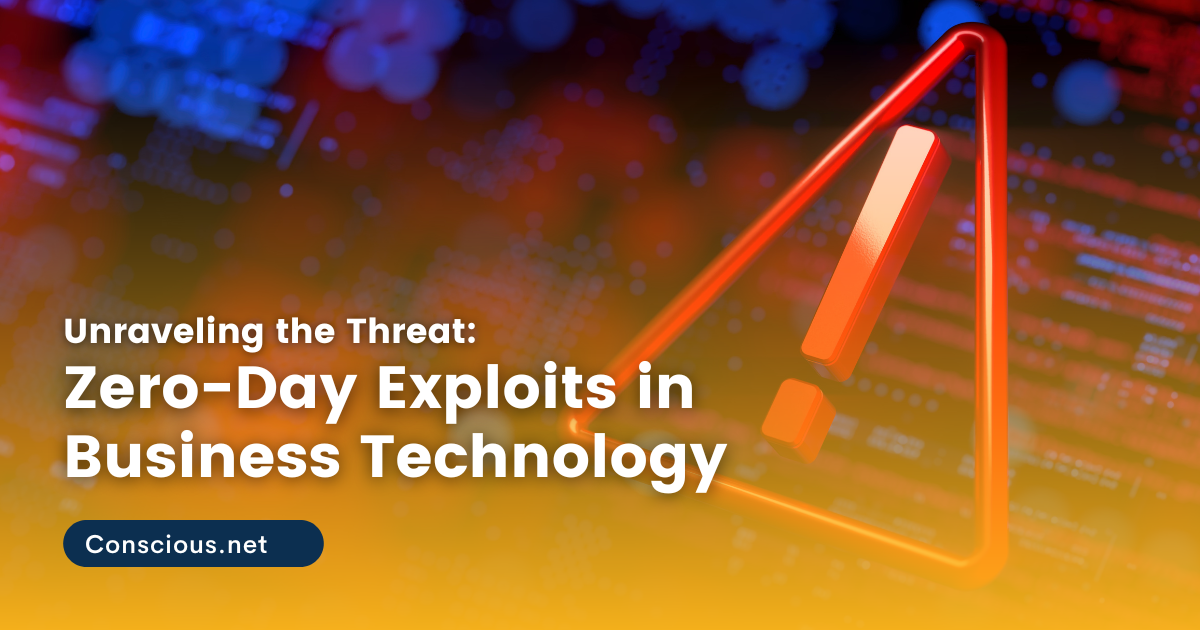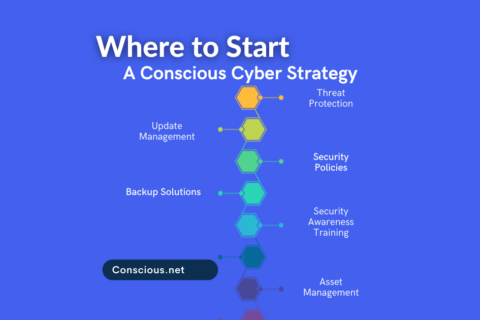Unraveling the Threat: Zero-Day Exploits in Business Technology

In the fast-paced realm of technology, where innovation is constant, businesses leverage cutting-edge solutions to stay competitive. However, with this progress also comes risk, and one of the most potent threats facing businesses today is the zero-day exploit. In this article, we’ll explore what zero-day exploits are, their implications for business technology, and how organizations can defend against these types of cyber threats.
Understanding Zero-Day Exploits
A zero-day exploit refers to a cyber attack that takes advantage of a security vulnerability on the same day it is discovered or exploited. The term “zero-day” implies that the affected software vendor has zero days to address and patch the vulnerability before it is exploited by malicious actors. These exploits target undisclosed or unknown vulnerabilities, making them particularly dangerous.
The Element of Surprise
What makes zero-day exploits so nefarious is the element of surprise. Unlike known vulnerabilities for which patches may already be available, zero-day vulnerabilities are often unknown to both software vendors and the organizations using their products. Cybercriminals capitalize on this lack of awareness to launch targeted attacks before any defensive measures can be taken.
Targeting Specific Software
Zero-day exploits can target a wide range of software, including operating systems, web browsers, and even applications widely used in business environments. Attackers may employ various methods, such as phishing campaigns or drive-by downloads, to deliver malware that exploits the undisclosed vulnerabilities.
Implications for Business Technology
Zero-day exploits pose significant threats to business technology, with far-reaching implications that can impact an organization’s operations, data security, and reputation.
Data Breaches
One of the primary goals of zero-day exploits is unauthorized access to sensitive data. Whether it’s customer information, intellectual property, or proprietary business data, a successful zero-day attack can lead to a data breach. The consequences of a data breach extend beyond financial losses, encompassing damage to reputation and customer trust.
Disruption of Operations
Zero-day exploits can disrupt critical business operations by exploiting vulnerabilities in essential software or infrastructure. This disruption can lead to downtime, affecting productivity and potentially causing financial losses. In sectors where uptime is paramount, such as finance or healthcare, the impact can be particularly severe.
Corporate Espionage
Zero-day exploits are often favored by cybercriminals engaging in corporate espionage. By infiltrating a business’s systems and gaining unauthorized access to proprietary information, competitors or malicious actors can gain a significant advantage. This can lead to a loss of intellectual property, trade secrets, and a decline in market competitiveness.
Financial Consequences
The financial consequences of a zero-day exploit can be staggering. Beyond the immediate costs of mitigating the attack and potential legal ramifications, businesses may also face regulatory fines for failing to adequately protect sensitive information. Additionally, the long-term impact on revenue and customer trust can be substantial.
Defending Against Zero-Day Exploits
Given the elusive nature of zero-day exploits, defending against them requires a multi-faceted and proactive cybersecurity strategy. Most mid-sized businesses consider outsourcing this element of their operations to a trusted technology provider whose core competencies are focused on Managed Detection and Response (MDR). Conscious Networks utilizes a holistic approach to technology to recommend the best options, given your business environment, compliance requirements, and risk profile.
- Regular Software Updates – While zero-day exploits exploit unknown vulnerabilities, organizations can minimize the risk by staying vigilant about software updates. Regularly updating operating systems, applications, and security software ensures that known vulnerabilities are patched promptly, reducing the attack surface for potential exploits.
- Network Segmentation – Implementing network segmentation is crucial for containing the impact of a zero-day exploit. By dividing the network into segments, organizations can prevent lateral movement by attackers, limiting their ability to traverse the entire infrastructure even if a breach occurs.
- Intrusion Detection Systems (IDS) and Intrusion Prevention Systems (IPS) – Deploying IDS and IPS solutions can help organizations detect and prevent zero-day exploits. These systems monitor network and system activities for unusual patterns or behaviors that may indicate a potential attack. When anomalies are detected, these systems can take proactive measures to prevent the exploit from succeeding.
- User Training and Awareness – Human error remains a significant factor in cybersecurity breaches. Educating employees about phishing tactics, safe online practices, and the importance of reporting suspicious activities can significantly reduce the likelihood of successful zero-day attacks initiated through social engineering.
- Threat Intelligence – Utilizing threat intelligence services can provide organizations with early warnings about potential zero-day vulnerabilities. By staying informed about emerging threats and vulnerabilities, businesses can proactively implement defensive measures before malicious actors can exploit them.
In the ever-evolving landscape of cybersecurity threats, zero-day exploits stand out as particularly challenging adversaries. Their ability to strike with little warning and exploit unknown vulnerabilities makes them a formidable threat to business technology. Organizations must adopt a proactive cybersecurity stance, combining regular software updates, network segmentation, advanced detection systems, user training, and threat intelligence to effectively defend against the potential fallout of zero-day exploits. By understanding the nature of these threats and implementing comprehensive security measures, businesses can fortify their defenses and navigate the digital landscape with greater resilience.
Free Guide to Protecting Your Business: Cyber Security & Cyber Insurance
Download this comprehensive guide and get answers to common questions about Cyber Security and Cyber Insurance.
This guide reviews some of the basic cyber strategies that any business can incorporate. Most of all, this guide will help you understand how to get a free IT assessment for your business, implement best practices, and balance budget vs. risk. The guide will also help you understand the 7 key purposes of cyber insurance and how to determine your coverages and obtain potential discounts.




